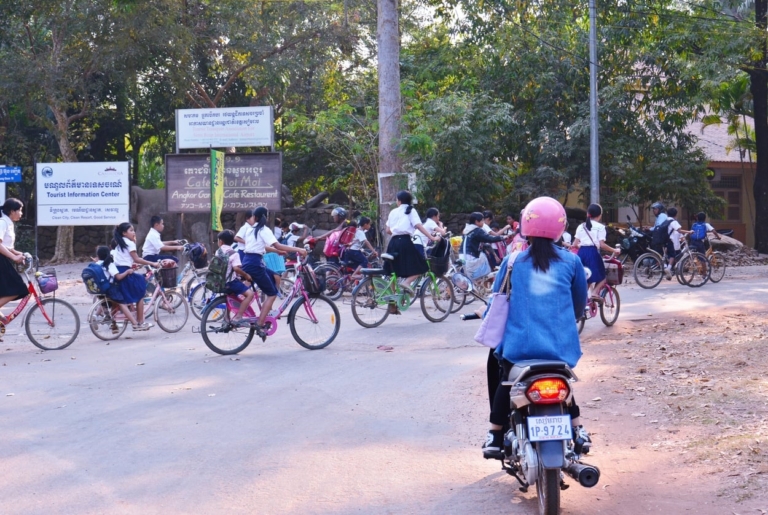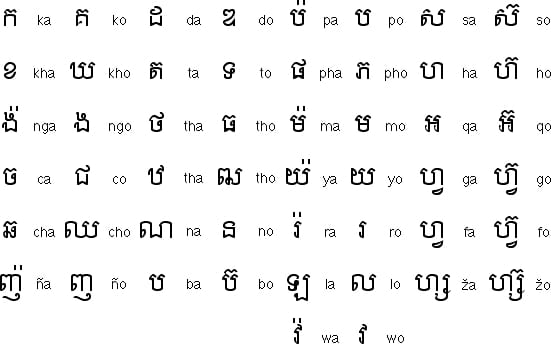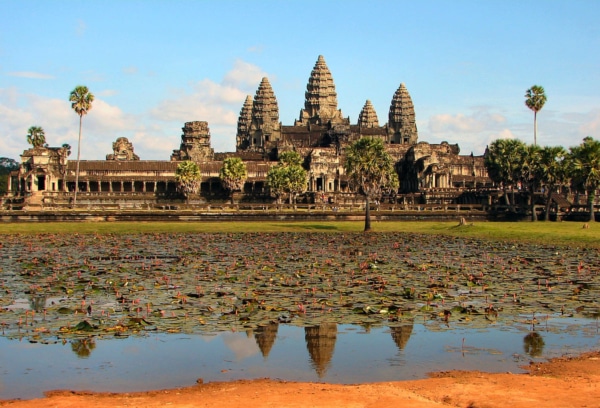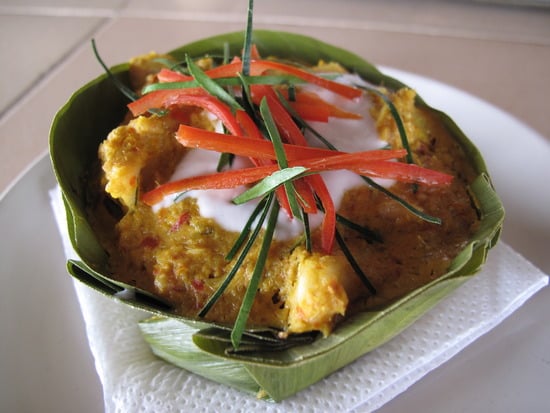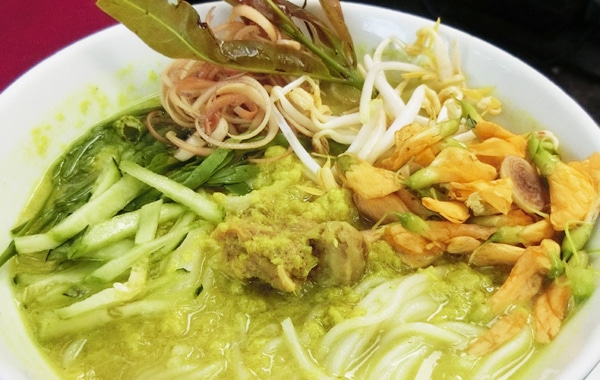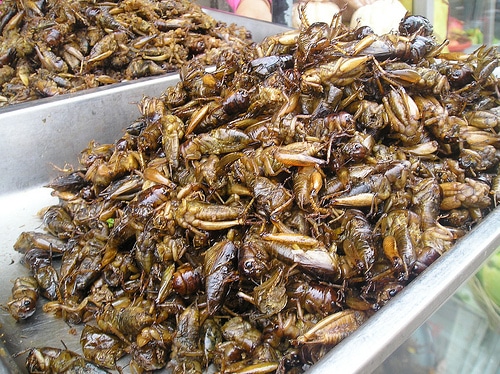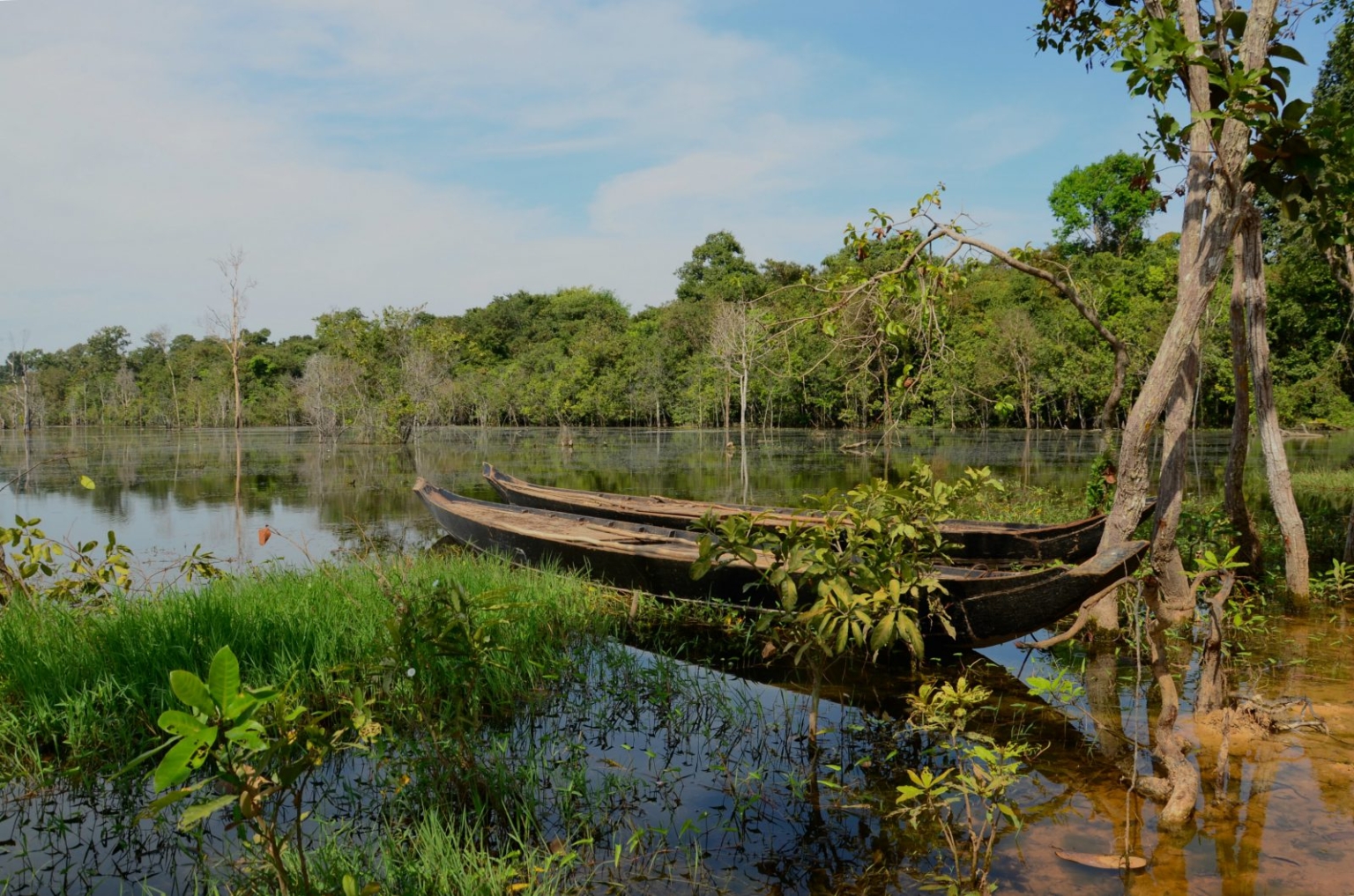
ភូមិសាស្ត្រ
(Geography)
Cambodia is a Southeast Asia country with a rich yet turbulent history. Sharing borders with Laos, Vietnam, and Thailand, Cambodia is slightly smaller than the U.S. state of Oklahoma. Its capital, Phnom Penh, is located in the south-central part of the country.
The climate is tropical, with a wet season from May through November and a dry season from December to April. Temperatures range from 68 to 97 °F (10 to 38 °C), and humidity is consistently high reaching over 90% through most of the wet season.
Cambodia’s mountainous areas are dense with forests that house a wide variety of plant and animal life. There are palm, rubber, coconut, kapok, mango, banana, and orange trees, as well as the high sharp grass of the savannas. Birds, including cranes, pheasants, and wild ducks, mammals such as elephants, wild oxen, panthers, and bears abound throughout the country. Fish, snakes, and insects also are present in abundance.
In 2016 Cambodia’s population was at 15.8 million people with over half of the population under the age of 15. The largest city, Phnom Penh, is home to about 4 million Cambodians.
ភាសា
(Language)
Khmer, the national language, is spoken by almost 95% of all inhabitants. Khmer is a nontonal language so most words are monosyllabic (unlike Thai or Vietnamese). Khmer is written from left to right with each sentence or phrase generally combining together to have no spaces between each word. Consonant clusters within a word are stacked, with the second and third consonant being written in reduced form under the main consonant. Modern Khmer uses 33 consonants while the original language had 35 consonants. French, the second most common language, is often used in commercial and affluent circles. The Kingdom of Cambodia was a French territory from 1863–1953 with French the language spoken by government officials and all businesses. English is also being taught in schools and has begun to be replaced in the business world as well. The Vietnamese and Chinese population use their own respective languages instead of Khmer.
លុយ
(Money)
The riel (Khmer: រៀល) is the currency of Cambodia. Some believe that the name comes from the Mekong River fish, the riel (“small fish” in Khmer). More likely the name derives from the high silver content Mexican Real used by Malay, Indian, and Chinese merchants in mid-19th-century Cambodia.
Cambodia’s economy is based on the production of rice, rubber trees, and fishing. The Tonle Sap is one of the major fishing reservoirs in Asia, and its products have played a key role in the Cambodian economy and diet. Cattle breeding is another important source of income. Other crops in Cambodia include coconuts, corn, soybeans, sweet potatoes, beans, cassava, tobacco, and peanuts.
With a fragile economy, Cambodia depends heavily on donor aid to help more than 75% of its population that still engage in subsistence farming. Subsistence farming is where farmers try to grow enough food to feed themselves and their families. They rarely have extra food to use for income or trade. With skewed demographics—more than 50% of its population is 20 years old or younger—proper jobs have to be created.

សាសនា
(Religion)
Buddhism has been Cambodia’s religion since 1989. About 93% of the population practice either Hinayana or Theravada Buddhism. It has been reported that most people also practice some kind of animism. The Chinese and practically all Vietnamese in Cambodia practice a traditional mixture of Mahayana Buddhism, Taoism, Confucianism, ancestor worship, and animism. In 2014, there were almost 1 million Muslims, representing the four branches: Shafi, Wahhabi, ImanSan, and Kadiani. Less than 1% identify as Christian, with over 100 separate organizations represented. There are reports of a small community of the Vietnamese Cao Dai religion and Baha’is.
The Constitution grants the freedom of religion, and the government states that they respect this right for the people. All religious groups register through the Ministry of Cults and Religious Affairs to build places of worship and freely conduct their religious activities.
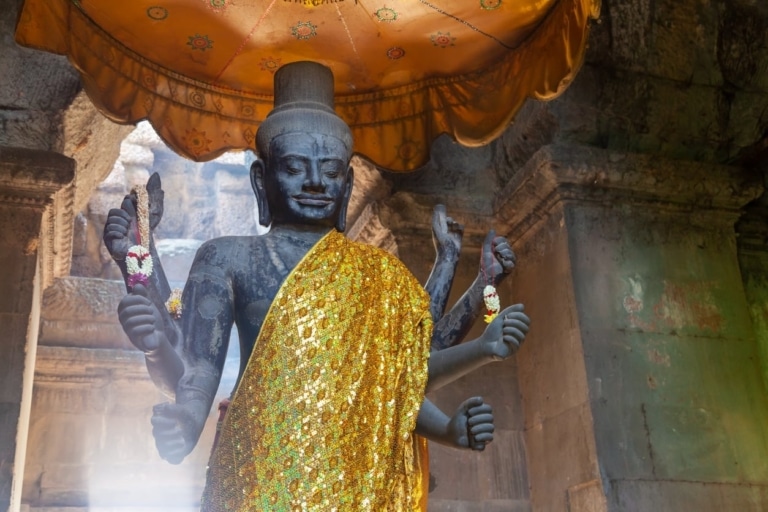
អង្គរវត្ត
(Angkor Wat)
Angkor Wat (“Capital Temple”) is the tourist destination in Cambodia and the largest religious monument in the world. It was originally constructed as a Hindu temple for the Khmer Empire gradually transforming into a Buddhist temple towards the end of the 12th century. It has become a symbol of Cambodia appearing on the national flag (the only country in the world to feature a building on its flag), and it is the country’s prime attraction for visitors.
Angkor Wat combines two basic plans of Khmer temple architecture: the temple-mountain and the galleried temple. The temple is admired for the grandeur and harmony of the architecture, its extensive bas-reliefs, and for the numerous devatas adorning its walls.
អាហារ
(Food)
Rice is the staple food in Cambodia, and it is part of every meal, both as an accompaniment and used as an ingredient for many dishes. According to the International Rice Research Institute, there are 2,000 rice varieties indigenous to Cambodia that were developed over centuries by Cambodian rice farmers.
Rice is eaten every day in the form of street-side snacks, such as deep-fried rice cakes with chives and spinach, Cambodia’s famous rice noodle soup Kuyt Eav or rice porridge, and also many desserts. Plain white rice is served with nearly every family meal, typically served with grilled freshwater fish, a samlor or soup, and an assortment of seasonal herbs, salad leaves, and vegetables.
These are some popular foods eaten in Cambodia:
Amok: A thick soup cooked with fish, meat, vegetables, eggs, and coconut milk similar to curry then steamed in banana leaves.
Prahok: A pungent type of fermented fish paste that adds a salty tang to many Cambodian dishes. Prahok is used as dipping sauce for vegetables, fried and mixed with meat, mixed in with soups, or eaten as the main dish with a side of rice. While an acquired taste for most westerners, Prahok is a national institution in Cambodian cuisine.
Num Banh Chok: A beloved Cambodian dish found at street-side vendors, restaurants, produce markets, and in shophouses. In English, it’s often simply called Khmer noodles. A typical breakfast called Num Banh Chok consists of noodles pounded out of rice, topped with a fish-based green curry gravy made from lemongrass, turmeric root, and kaffir lime.
Fresh mint leaves, bean sprouts, green beans, banana flower, cucumbers, and other greens are heaped on top. There is also a red curry version that is usually reserved for ceremonial occasions and wedding festivities.
Tasty Snacks: Cambodians love foods that would not appeal to most in the western world. For instance, the dish Balut, considered a high-protein snack, is a fertilized duck embryo that is boiled alive and eaten right out of the shell. Crickets, considered a pest in most parts of the world, are deep-fried and seasoned for a high protein snack well loved by the locals. Even fried Tarantulas are a tasty snack and considered a delicacy in Cambodia. The spiders are fried in cooking oil to achieve the crunchy texture. The abdomen contains a salty brown paste consisting of organs, possibly eggs, and excrement. The head and body are a soft, white meat within the crispy outside. The legs have very little meat and are just a pure crunch. If you are craving something more familiar, there are three Habit Burger Grills in Phnom Penh, the capital of Cambodia!
តន្ត្រី
(Music)
Traditional Cambodian art music is highly influenced by ancient music and Hindu forms of music. Religious dancing, many of which depict stories and play out ancient myths, are common in Cambodian culture. Some dances are accompanied by a pinpeat orchestra, which includes a ching (cymbal), roneat (bamboo xylophone), pai au (flute), sralai (oboe), chapey (bass banjo), gong (bronze gong), tro (fiddle), and various kinds of drums. Each movement the dancer makes refers to a specific idea, including abstract concepts like today (pointing a finger upwards).
Click on the video to the right to experience traditional Cambodian music. Try sitting in a meditative pose with your eyes closed and really listen to the different sounds of the unique instruments as they combine together to create this special music of their land.
Cambodian pop music, or modern music, include slow, crooner-type music like songs such as Sinn Sisamouth’s Ae Na Tiw Than Suor?. The style is similar to the American music of the 1960s. Dance music is also very popular. Each type of Cambodian dance music is classified by its specific rhythm. The two most common types of Cambodian dance music are ramvong and ramkbach. Ramvong is slow dance music, while ramkbach is closely related to Thai folk music.
ការអប់រំ
(Education)

Currently, the educational system is still being rebuilt after years of recovery. Under the Pol Pot regime, education was virtually abolished, as all children were sent to work in the fields; education was limited to political instruction. Most of the educated class had been killed by 1979.
Cambodia has public and private schools throughout the country. Most of the schools are in the populated parts of the country, especially in the capital city Phnom Penh. Most of the villages in the rural parts of Cambodia do not have schools and therefore the children do not have access to education. According to the current government laws, each child is required to attend six years of primary education and three years of secondary education, totaling nine years. Unfortunately, most Cambodian children who live outside the big cities cannot abide by this law due to the school’s location and lack of transportation. Therefore, they grow up illiterate and unable to find work or improve the economic standard they currently live in.
In the large cities, the academic year runs from October to July. The primary language of instruction is Khmer while French and English are taught in advanced study. The student-to-teacher ratio for primary school was at about 56:1 in 2013.
Institutes of higher education include the University of Phnom Penh, the Institute of Technology of Cambodia, the Royal University of Agriculture, Royal University of Fine Arts, and Maharishi Vedic University. In 2013, only about 3% of young Cambodians aged 18-22 were enrolled in some type of higher education program.
Education is a massive opportunity in this country, which is why the FDS Foundation has committed its time and money to this important cause. Join us in our commitment to improving the lives and increasing the potential of the beautiful children of Cambodia.
